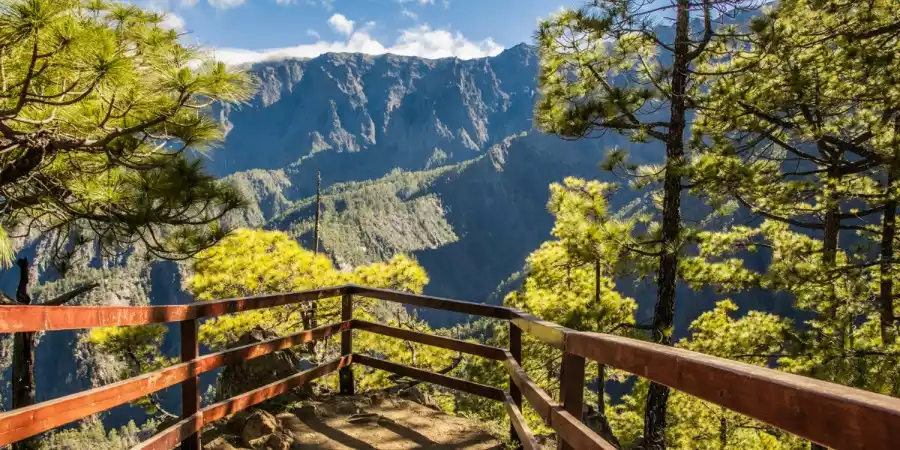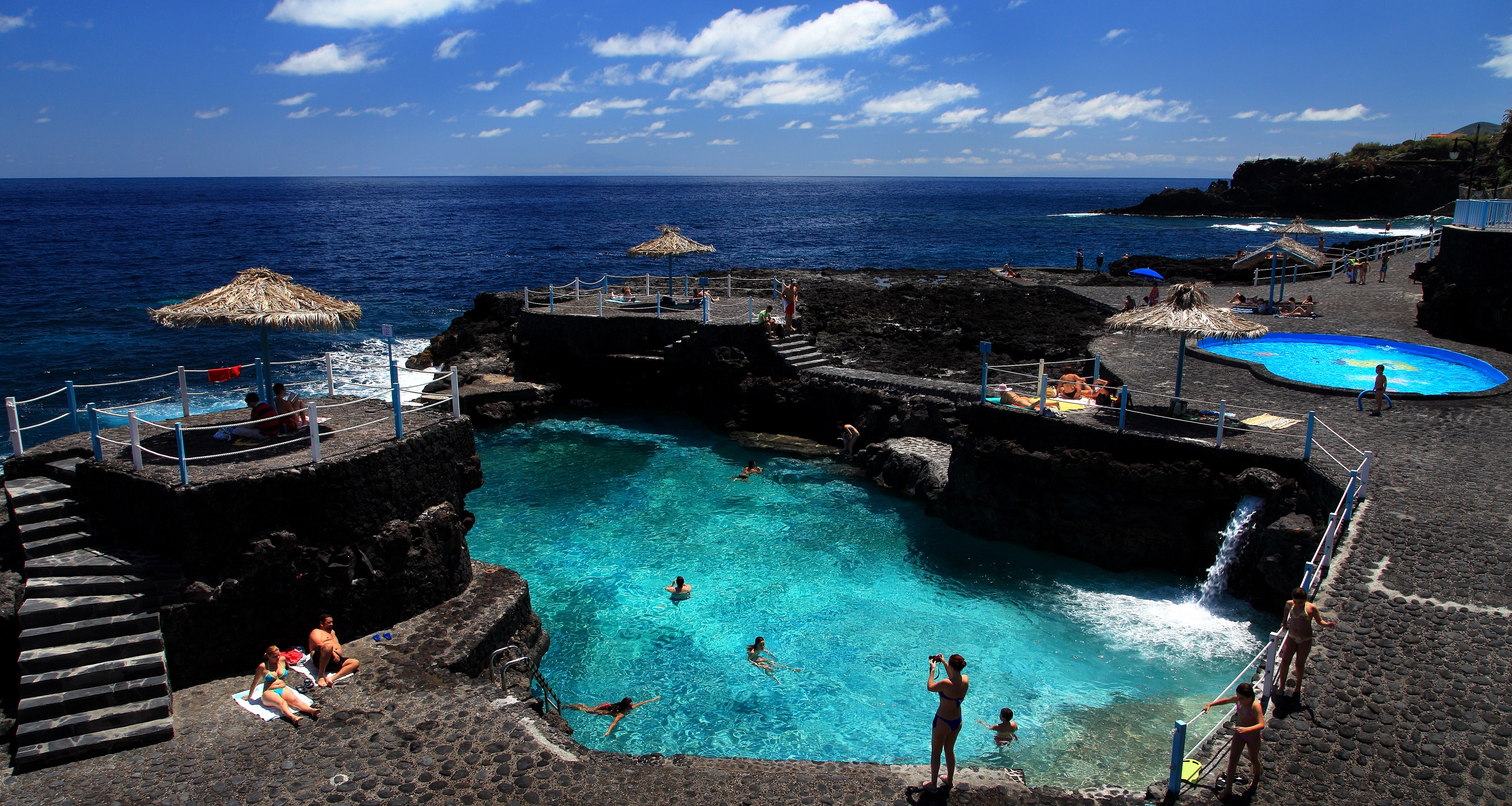Information: Dieser Blog ist derzeit nur auf Spanisch und Englisch verfügbar.
La Palma is the second youngest island in the Canary archipelago (1.7 million years old, after El Hierro with 1.2 million years), one of the smallest and, nevertheless, one of the most heterogeneous as it gathers in its 706 km2 many places to visit and explore. It is also one of the most famous islands, especially due to the recent volcanic eruption of September 2021, whose lava destroyed entire villages on its way to the sea and created the most recent land in Europe.
Although there are still areas affected by the eruption and some nearby places that remain closed to the public, most of the island can be visited normally and, although the volcano is still in the process of degassing (that is, releasing gases that can be harmful to health), all the areas that can be visited in the affected zone are completely safe.
Caldera de Taburiente National Park, located on the island of La Palma, is a natural wonder with its impressive volcanic landscape and unique biodiversity. In the center of this park is the Caldera de Taburiente, a vast crater eroded by volcanic activity, sculpted by water action over millions of years, and surrounded by high peaks and cliffs, forming an impressive natural amphitheater thanks to its steep walls.
Although there are short and accessible trails, the most common hike is the one from the Mirador de los Brecitos to the Barranco de Las Angustias. This route is one of the best things to do in La Palma as it will take you through some of the most beautiful areas of the caldera, such as Hoyo Verde, Cascada de Colores, and Dos Aguas in approximately 6 hours.
Cascada de Colores is one of the highlights of this route, but do not expect a large waterfall; it is rather small and may not have much water when you visit. What is beautiful are the colors of the rock it falls over, with brown, green, and yellow tones.

Mirador de la Cumbrecita is one of the most impressive observation points to see in La Palma. It is located within Caldera de Taburiente National Park and is ideal for enjoying a panoramic view of the Caldera de Taburiente. The view from this elevated point offers a perspective of the majesty of the landscape, with its imposing rock formations and the rich variety of vegetation that characterizes this natural reserve.

Roque de los Muchachos is also located in Caldera de Taburiente National Park and is the highest point in La Palma at just over 2,400 meters above sea level. This rocky formation is the result of geological processes that have shaped the volcanic landscape of the island, and it is especially notable for the flora that surrounds it, which is very varied and includes species adapted to the extreme conditions of altitude and strong winds.
In addition to visiting the Roque itself, this area is especially known for the Roque de los Muchachos Observatory, an astronomical research center of great international relevance. Here there are a series of telescopes and observatories from different countries, taking advantage of the ideal conditions for astronomical observation offered by the location of Roque de los Muchachos. Among the notable telescopes is the Gran Telescopio Canarias (GTC), one of the largest optical telescopes in the world. This is because the sky of La Palma is a Starlight Destination and Reserve for star observation due to its atmospheric conditions and low light pollution.
Charco Azul is a unique natural enclave on the island, notable for its scenic beauty and tranquil atmosphere. Located in the municipality of San Andrés y Sauces, this area is known for its natural saltwater pools, which form among the volcanic rocks and fill with ocean water. The combination of crystal-clear waters, rock formations, and surrounding vegetation creates an impressive landscape that attracts both locals and tourists.
Keep in mind that the natural pools of Charco Azul are ideal for swimming and snorkeling, as the tide constantly renews the water. In the surroundings of the charco, you will find bars and areas for sunbathing, as well as trails that allow you to explore the area, making it one of the most recommended activities on the island if you are looking for a fun time.
